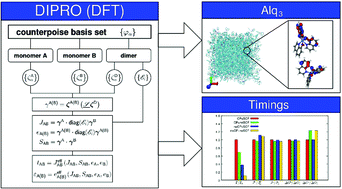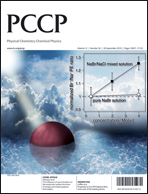Density-functional based determination of intermolecular charge transfer properties for large-scale morphologies
Abstract
Theoretical studies of charge transport in organic conducting systems pose a unique challenge since they must describe both extremely short-ranged and fast processes (charge tunneling) and extremely long-ranged and slow ones (molecular ordering). The description of the mobility of electrons and holes in the hopping regime relies on the determination of intermolecular hopping rates in large-scale morphologies. Using Marcus theory these rates can be calculated from intermolecular transfer integrals and on-site energies. Here we present a detailed computational study on the accuracy and efficiency of density-functional theory based approaches to the determination of intermolecular transfer integrals. First, it is demonstrated how these can be obtained from quantum-chemistry calculations by forming the expectation value of a dimer Fock operator with frontier orbitals of two neighboring monomers based on a projective approach. We then consider the prototypical example of one pair out of a larger morphology of tris(8-hydroxyquinolinato)aluminium (Alq3) and study the influence of computational parameters, e.g. the choice of basis sets, exchange–correlation functional, and convergence criteria, on the calculated transfer integrals. The respective results are compared in order to derive an optimal strategy for future simulations based on the full morphology.


 Please wait while we load your content...
Please wait while we load your content...